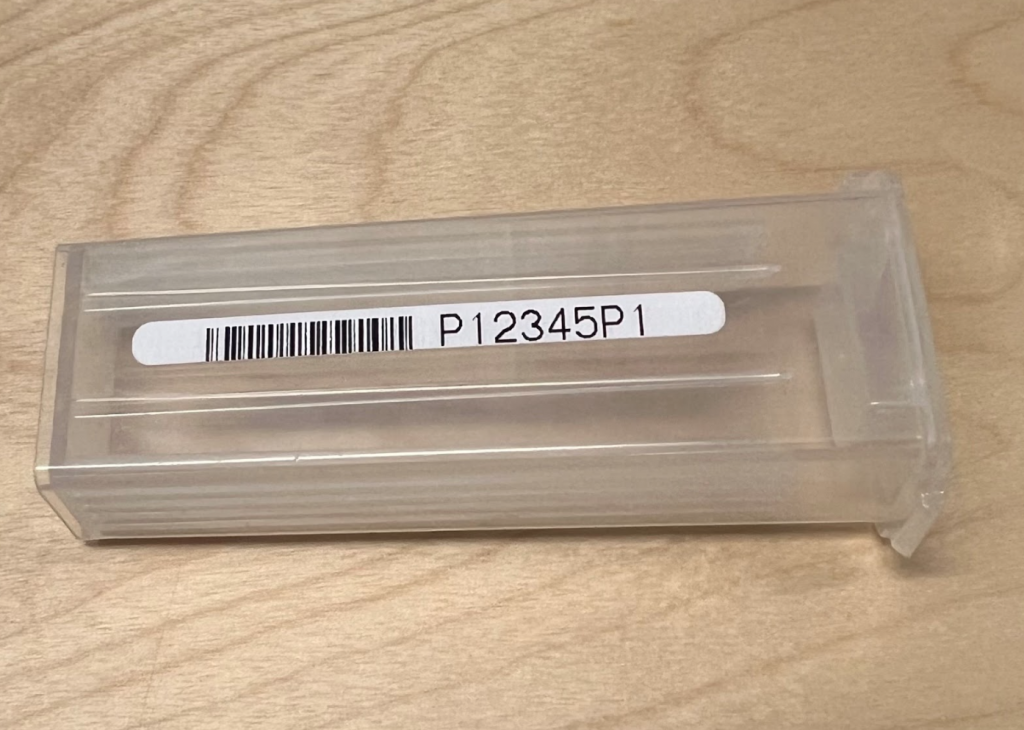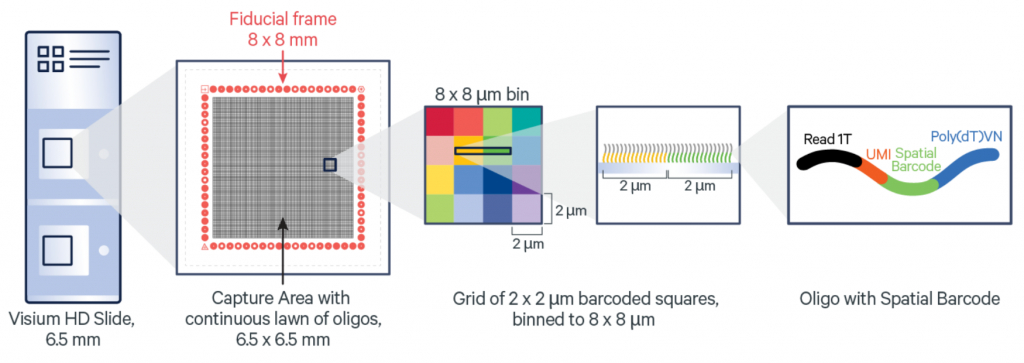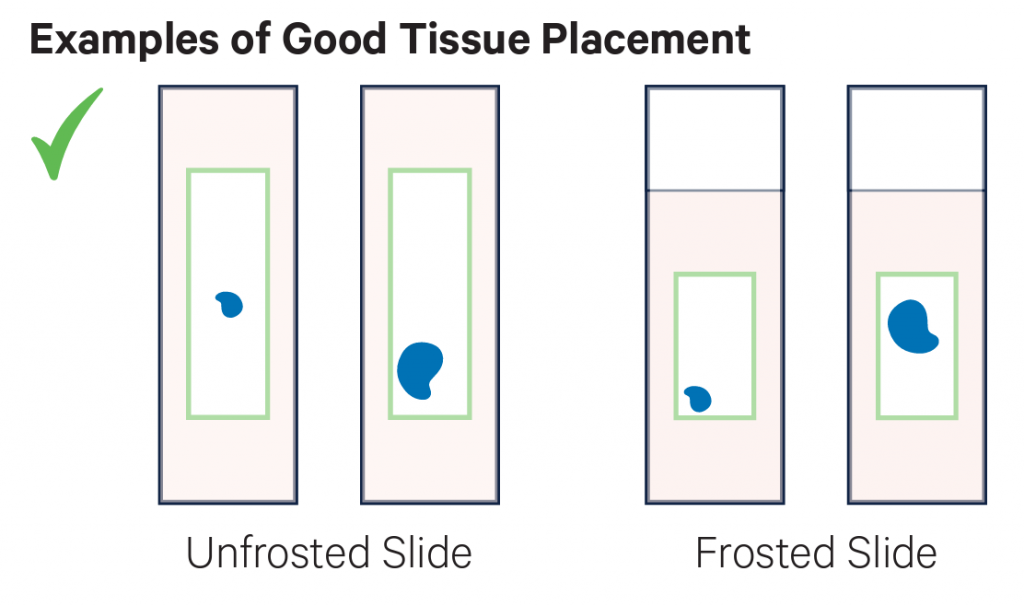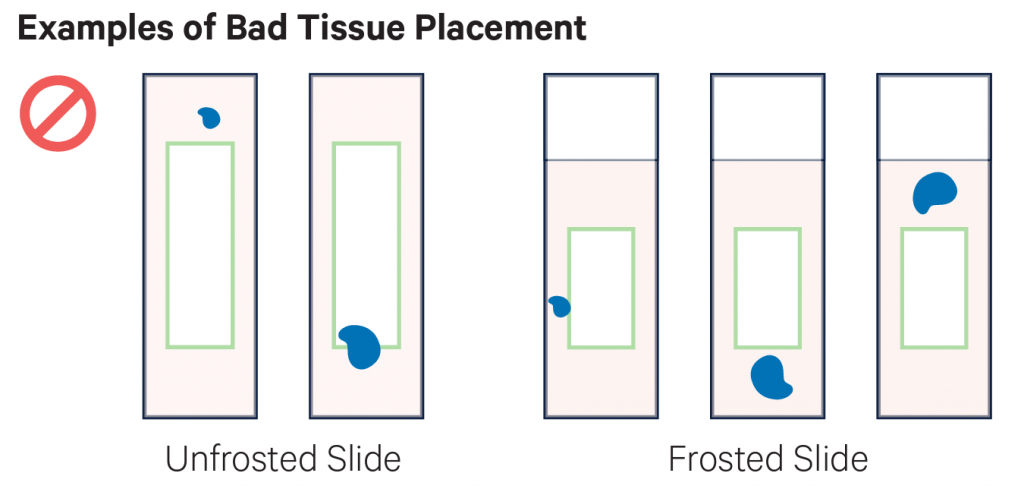Visium HD – Probe-based – FFPE samples
We now offer high resolution spatially resolved transcriptomics through the 10X Genomics Visium HD CytAssist, which combines histology with probe-based transcriptomics in HD spatial context
Visium HD Spatial Gene Expression is a single cell scale, high resolution, CytAssist-enabled, whole transcriptome probe-based assay compatible with mouse or human FFPE tissue sections placed on glass slides.
Coupling gene expression studies with tissue morphology is critical to our understanding of biology and the progression of disease. The RNA-templated ligation (RTL) probe sets from 10X Genomics allow spatial analysis of formalin-fixed paraffin-embedded (FFPE) human and mouse tissues. Recently, new organ-specific datasets were released for human and mouse.
The protocol utilises the CytAssist instrument, on four 6.5 x 6.5 mm capture area sizes. You can section the FFPE tissue samples in your own lab, place them on superfrost slides, and send those to us for processing.
Please contact us before planning your experiments for a discussion

IMPORTANT! Please do not section your samples prior to coordinating with us to ensure that we can work on your sample within the stipulated timeframe of 6 months.
Sample requirements
- This method is probe-based and is only available for human and mouse tissue samples.
- Currently, Visium HD is only available for 6.5 mm x 6.5 mm capture areas.
- Please extract RNA from the same tissue block from which sections for Visium HD will be taken. We require you to estimate the DV200% of the extracted RNA (on a BioAnalyzer or similar). This value should be greater than 30% to maximise chances of success at library preparation.
- We require you to check that the morphology of the sections is good enough for cell type annotations. This can be assessed by H&E staining of sections consecutive to the ones you submit to NGI. Please, send us the images that you obtained highlighting your region of interest, prior to sample delivery. We will use this as a reference when selecting the areas from where the RNA should be transferred and will not be able to evaluate the quality of the staining with low resolution images.
- Any staining optimisations need to be done by the user otherwise we will follow 10X Genomics’ standard protocol.

Example tissue section placement for a 6.5 mm CytAssist. Areas of interest within the section were indicated by the user with arrows.
- Each kit contains a total of 4 capture areas.
- We require you to section and place the FFPE sections on coated or charged glass slides e.g VWR SuperFrost Plus Slides.
- Only one tissue section should be placed per slide!
- Sections must be between 3-10 µm thick. We most often work with sections that are 5 µm thick (refer to this list of FFPE tissues tested by 10X Genomics for more information).
- Sections must be placed within the specific margins described here – sections outside the margins cannot be successfully transferred. To do so, create a representative allowable area on a 75 x 25 x 1 mm blank slide (see image below). Optimise section quality and practice section placement within the allowable area before working with experimental blocks.
- To ensure that the section is in the correct area, we suggest using this printable template.
- After the sections are taken, the slides must be incubated at 42°C for 3 h and dried overnight at room temperature in a desiccator. Store them at room temperature in a desiccator prior to shipment to NGI.
- The sections placed within the given margins may be larger than the capture areas (see sizes above). However, note that any information for tissue sections placed outside the defined areas will not be transferred onto the Visium slides during processing.
- We recommend that you provide us with a back-up sample for each sample that is submitted to us. These can be returned to you upon request.
- Library preparation must be started within 6 months after sectioning so this needs to be coordinated with NGI.
- Check 10X Genomics website for further information about Visium HD Spatial Gene Expression.
Examples of placement of sections. On the top row there examples of good placement of sections within the margins of the slides. In the middle row there are examples of tissues placed partially or totally outside the margins, and therefore they cannot be used. The bottom row shows the cassette used to transfer the probes to the Visium slide.
Information we need prior to sample delivery
- Once your order has been accepted, you will receive a project Agreement. Please read it to make sure it corresponds to your specifications and if everything looks ok, please sign it and return to us electronically.
- A safety declaration will be sent to you along with the user agreement, which also requires to be signed.
- You will also receive a Sample Information Sheet to fill in the sample names and the DV200 values derived from sections you analysed. Please send it back to us when you have the information.
- Together with these documents, we will send you slide mailers labelled with the barcode of the project. You can use these to send the slides back when ready. We will send one slide mailer per sample, which can contain also its backup sample is the case.
- You need to send us microscope images of H&E stained sections adjacent to the samples as previously described, clearly highlighting the area of interest (see example below).
- Users are strongly encouraged to submit one backup for every sample that is submitted.
Instructions for sample labelling and delivery
Use the pre-labelled slide mailers to send us the superfrost slides with your sections. Each slide mailer should contain a slide with your section of interest and a backup slide (if possible).
The project-specific barcode label is a combination of your project ID (Pxxxxx) – see user agreement – and a serial number: e.g. `PxxxxxP1` for the first container. Each slide needs to be labelled with the NGI sample IDs from the Visium sample information sheet using xylene resistant stickers or markers, e.g.:
- Container `PxxxxxP1` will contain slides labelled `Pxxxxx_101`-`Pxxxxx_101-backup`
- Container `PxxxxxP2` will contain slides labelled `Pxxxxx_201`-`Pxxxxx_201-backup`.
The slide mailers can be shipped to us in a regular padded envelope at room temperature. However, this can strongly depend on how the slides have been previously stored, on the potential duration of transit, and on environmental conditions during shipping. For e.g. ship the samples at 4°C during a warm summer.

Example of slide container. The image shows the slide container that we will be send to the users. It has a label with the barcode corresponding to the project. Inside, they can fit a maximum of 4 slides and which should be individually labelled with the name of the sample.
What we do with your samples
Tissue sectioning is not included in our services using the CytAssist protocol for Visium HD. The samples will be first deparaffinized, H&E stained, and imaged. This will be followed by de-crosslinking and probe hybridisation. The hybridised probes will then be transferred to the Visium slide using the CytAssist instrument. Probe extension with integration of spatial barcodes will be then performed on the slide, and the subsequent steps are carried out in reaction tubes. Last would be the sequencing and the QC of the results and the run of SpaceRanger.

Library QC and sequencing
All individual libraries will be assessed for their quality, this includes concentration measurements and estimation of average fragment lengths. The libraries will be pooled based on these results, and later sequenced on Illumina NovaSeq XPlus, depending on the sequencing depth required.
A general recommendation is 275 million read-pairs per capture area to achieve 50% saturation. This means around 1.1 billion reads in total for 4 sections. Thus, we may need to adjust the sequencing setup after we know the actual tissue coverage and result of library QC. Sequencing is carried out using a 43-10-10-50 read setup: 43 cycles in read 1, two index reads with 10 cycles in each and then 50 cycles in read 2.
Bioinformatics
Sequencing data QC is handled by the NGI and runs through the 10x Genomics Space Ranger analysis pipeline. Raw data and Loupe visualisation files are delivered. You can read more about Spatial Transcriptomics analysis here.
Policy for damaged and/or misplaced sections
NGI will proceed with library preparation unless we deem user-supplied sections to be damaged, sub-optimally placed on slides, or not at a suitable thickness for the method. Therefore, it is in the best interest of users to ensure that our stated sample requirements are strictly adhered to. We strongly encouraged to submit one backup for every sample.
Signing an NGI-issued agreement for your project signifies that you accept that our staff can decide how to proceed with samples that are submitted to us. Decisions may include but are not limited to:
- Proceeding with samples that do not strictly fulfil our sample requirements but have a fair chance of yielding libraries (albeit at a lower quality than would otherwise be expected), etc.
- Charging a flat fee of SEK 5000 as a processing fee for every back-up sample that is processed at NGI if the user has not adhered to our sample requirements for section placement on slides.
- Aborting projects comprising samples that are suboptimal for Visium.
Note that we can never guarantee any outcomes of library preparation or the preceding steps for the Visium protocol, especially if samples do not meet the criteria defined by 10X Genomics and that we outline.
Last Updated: 23rd December 2025


